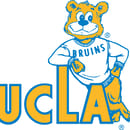Vulture Festival is widely known for hosting some of the most immersive fan experiences that Hollywood has to offer. This year, Her Campus had the opportunity to attend a multitude of events at the festival, which was held at The Hollywood Roosevelt Hotel — including an interactive screening of the 2006 classic The Devil Wears Prada, featuring commentary from director David Frankel and screenwriter Aline Brosh McKenna. If any of you are as crazy about this film as we are, you’ve seen it over 100 times and can recite the entire movie by heart — which is exactly the experience that Vulture Festival provided fans with this year. We’re here to provide you with the inside scoop on this iconic fashion-filled film straight from the mouths of those that dreamed up this cinematic universe ruled by none other than Miranda Priestly (played by Meryl Streep).
Before the screening began, actor Brendan Scannell (known for his role in the most recent television adaptation of Heathers) moderated a short Q&A with David and Aline. As long-time fans of the film, it was great to hear their respective creative insight into the themes of the movie as well as hear about the construction of the narrative and the creation of the iconic characters that we’ve all come to love. The film is famously known for its clever one-liners and quick-witted nature, but underneath this sharp humor lies much deeper subject matter revolving around morality and the true meaning of success. Aline was the fifth writer to have been connected to this project, but she was the first female writer to come on board. “It’s very unusual in Hollywood for there to be five writers, but Aline was the only one who got the credit” David chimed, “Well, there had been four men, and I really thought it was time for a woman to write it.”
This is just a testament to how badass Aline is, and what a great writer she is. She did graduate magna cum laude from Harvard, so it is no surprise how wonderful she is. When it came to talking about casting, we got the scoop! The role of Nigel had originally been written for Denis Leary, but due to scheduling conflicts, he couldn’t take the role. Stanley Tucci took on the role just 36 hours before production began. Anne Hathaway had been cast very early on in the process, having met with David for coffee just a few years prior to production taking off. Meryl Streep was not cast until the final script Aline had written was completed. She was the first actress on the list for the role of Miranda Priestly and as soon as she read the script, she took the job.
In the film, Meryl Streep portrays an Anna Wintour-esque character by the name of Miranda Priestly that is depicted as a wicked fashion icon with a tongue as sharp as her eye for fashion. Aline made the comment that, “Writing someone mean is incredibly freeing… [and] I have a little bit of Miranda Priestly in me.” Though Miranda is generally feared by all, she is above everything, the best at what she does — running a successful fashion magazine. David spoke on the topic of Miranda’s success by saying, “If you’re great at one thing, it’s a societal expectation…that you should come with all of these other attributes. We should appreciate people for their excellence.” Miranda Priestly was great at her job. Why did she also have to be nice and gracious? This was a recurring concept within the film — challenging societal expectations to be excellent in every way, whilst also shedding light on the particularly harsh criticism of women of authority in the workplace.
Anne Hathaway’s unstylish character Andrea “Andy” Sachs begins working as Miranda Priestly’s assistant, leading her down a rabbit-hole of her own morality. While it is a running gag throughout the film to make jokes at Andy for her poor sense of fashion, it is important to note her emotional struggle behind this physical transformation into a chic woman of the fashion world. She is faced with the pressure to conform to an ideal of a successful woman in fashion. Her character struggles with points of infidelity and betrayal of her close colleague. This film sheds light on the idea of losing yourself in your own success, and understanding that the choices we make are what define us — not just our clothes.
For the first 15 minutes of the film the audience just sat and watched, cheering along with the famous catchphrases, before Aline and David came back and asked if we would like commentary during the film. Of course everyone roared with cheers and they took their seats to the side of the screen with two microphones. Throughout the screening we got fun tidbits of behind the scenes dirt and drama. Most of the drama consisted of bad weather and difficulty scouting. During the scene where Andy first brings the book to Miranda’s apartment, David noted they had a hard time finding the right apartment. It wasn’t until three days before they shot those scenes they were able to secure the location, which had just undergone a $10 million renovation. Both David and Aline emphasized how much fun filming was overall. So much so that Emily Blunt even came to work on days she wasn’t on the call sheet. “Emily wasn’t supposed to be in this scene [the scene where Andy snorts at the two blue belts in Miranda’s office] she just showed up, she thought it was fun.”
The Devil Wears Prada not only has a star-studded cast (including Meryl Streep, Anne Hathaway, Emily Blunt, and Stanley Tucci), but also touches on the idea of transformation and the pure magic of fashion. When asked what they would most want audiences to receive and understand about the film, Aline and David touched on this idea of transformation. In the film, the glamorous world of fashion transforms Andy into “something fabulous.” Aline resonates with the particular idea that, “fashion is to be explored without being conventional.” There is no doubt that this movie holds a special place in our hearts, and we highly recommend it to those of you that have not yet seen it. In the famous words of Miranda Priestly, “That’s all.”




